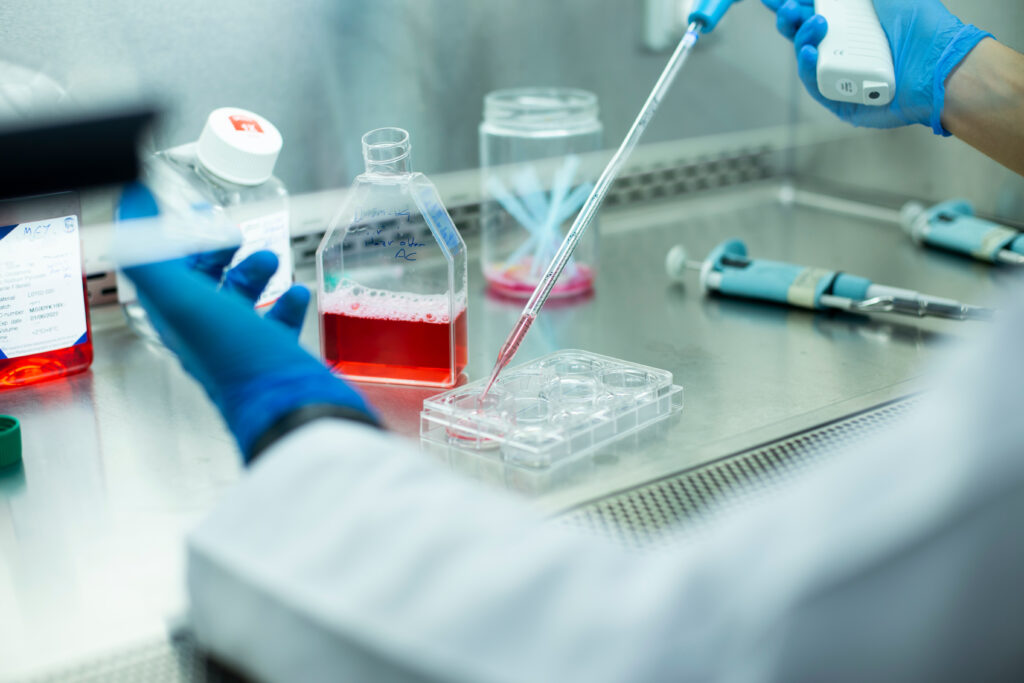Insects are a keystone species in the animal kingdom, often providing invaluable benefits to terrestrial ecosystems and useful services to mankind. While many of them are seen as pests (think mosquitos), others are important for pollination, waste management, and even scientific research.
Insect biotechnology, or the use of insect-derived molecules and cells to develop products, is applied in a diverse set of scientific fields including agricultural, industrial, and medical biotechnology. Insect cells have been central to many scientific advances, being utilized in recombinant protein, baculovirus, and vaccine and viral pesticide production, among other applications (5).
Therefore, as the use of insect cells becomes more widespread, understanding how they are produced, their research applications, and the scientific products that can be used with them is crucial to fostering further scientific advancements.
Primary Cell Cultures and Cell Lines

In general, experimentation with individual cells, rather than full animal models, is advantageous due to improved reproducibility, decreased space requirements, less ethical concerns, and a reduction in expense. This makes primary cell cultures and cell lines essential contributors to basic scientific research.
Primary cell culture involves the removal of specified cells from a target organism, and their subsequent growth in a controlled, yet favorable artificial environment called a cell culture medium. Cell lines can then be derived from a primary cell culture by isolating a single cell and placing it into fresh growth medium to further proliferate. This cell line process allows for quicker and easier cell proliferation, provides a longer life span compared to primary cell culture, and creates a new culture with genetically similar makeup (1).
Note: Some cells divide a limited number of times (finite cell lines) and ultimately die, whereas others can become continuous cell lines and divide indefinitely through a transformation process.
These cell lines provide scientists with the ability to design an almost unlimited number of models for normal cell biochemistry and physiology, and as cells will have little to no genetic variation tests should result in consistent cell responses (1). This is important as it allows researchers an opportunity to compare differences in test groups, better validate their results, and allow for reproducibility in applications where consistency is key, like development and manufacturing in biotechnology fields.
Why Insect Cells?
There is a plethora of different organisms that cells can be derived from for cell cultures, with mammalian being one of the most common. Recently however, insect cells have become a cost-effective alternative to mammalian cells, as they require less manufacturing, replicate quicker, and overall have lower maintenance costs (2,4).
Many posttranslational modification pathways found in mammalian systems are also present in insect cells, making them suitable for production of recombinant proteins and an ideal model for mammalian protein production. Insect cells additionally provide a safer alternative when working with vaccine production, as they have a lower risk of contamination with human pathogens (4).
With insect cells gaining more attention due to their favorable characteristics, new scientific products and systems are being discovered and introduced to advance and aid insect cell usage.
One Example: Insect Cells Transfection
Transfection is a general cell culture technique that involves the introduction of foreign nucleic acids into eukaryotic cells, in this case insect cells, thereby modifying a cell’s genetic information (3,6). By modifying a cell’s genetic information, the overall properties of the cell will change including gene functions and gene products.
For example, transfection of baculovirus plasmid DNA (bacmid) into an Sf9 cell, the most common insect cell currently used in research, would result in the production of baculovirus (7). This could be accomplished for other recombinant proteins of interest as well, as long as the transfection system allows effective delivery of the foreign DNA.
When setting up a transfection experiment, choosing an appropriate transfection method is imperative to maximizing results. Many factors can influence transfection, including cell health, cell quality and quantity, and the transfection reagents of choice.
Currently, insect cells can be transfected using reagents like those developed for mammalian cell culture. Recent work at Promega demonstrated that FuGNE® HD transfection reagent works well for the transfection of Sf9 insect cells, and we have guidance available to optimize transfection of a plasmid of interest for expression in Sf9 cells. The CellTiter-Glo® Viability Assay can monitor cell viability before and during transfection for recombinant protein expression. Sf9 cells are also compatible with assay systems such as Nano-Glo® Luciferase Assay System and Nano-Glo® Live Cell Assay System to measure expression of a NanoLuc-tagged recombinant protein by luminesce.
Literature Cited
- Bols, N. C., Kawano, A., & Lee, L. E. J. (2011). Cellular, Molecular, Genomics, and Biomedical Approaches | Culture of Fish Cell Lines (A. P. Farrell, Ed.). ScienceDirect; Academic Press. p1965-1970.
- Cc, S., D., & Divya, L. (2021). Insect in vitro System for Toxicology Studies – Current and Future Perspectives. Frontiers in Toxicology. 3.
- Chong, Z. X., Yeap, S. K., & Ho, W. Y. (2021). Transfection types, methods and strategies: a technical review. PeerJ.9, e11165.
- Chung, Y. H., Church, D., Koellhoffer, E. C., Osota, E., Shukla, S., Rybicki, E. P., Pokorski, J. K., & Steinmetz, N. F. (2021). Integrating plant molecular farming and materials research for next-generation vaccines. Nature Reviews Materials. 7(5), 372-388.
- Ejiofor, A. O. (2015). Insect Biotechnology. Short Views on Insect Genomics and Proteomics. 4, 185-210.
- Fuz-Kujawa, A., Prus, P., Bajdak-Rusinek, K., Teper, P., Gawaron, K., Kowalczuk, A., & Sieron, A. L. (2021). An Overview of Methods and Tools for Transfection of Eukaryotic Cells in vitro. Frontiers in Bioengineering and Biotechnology. 9.
- Nasimuzzaman, M., van der Loo, J. C. M., Malike, P. (2018). Production and Purification of Baculovirus for Gene Therapy Application. Journal of Visualized Experiments; JoVE. 134.
Latest posts by Shannon Sindermann (see all)
- What do Exosomes have to do with Cancer Research? - May 30, 2024
- SLIM Chances: Upside-down, but not Out on the Lunar Surface - February 27, 2024
- Uniting Diverse Minds, Vibrant Ideas, and Collaborative Spirit at the 2023 Biologics Symposium - December 13, 2023
